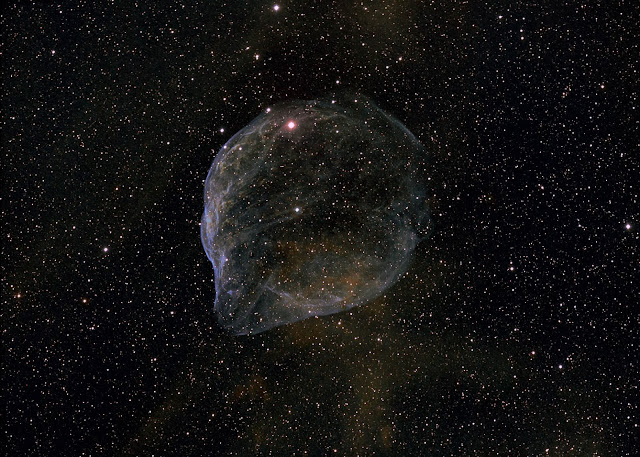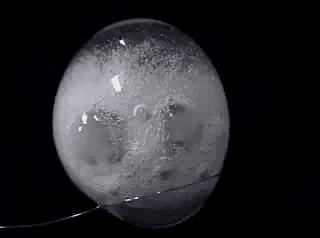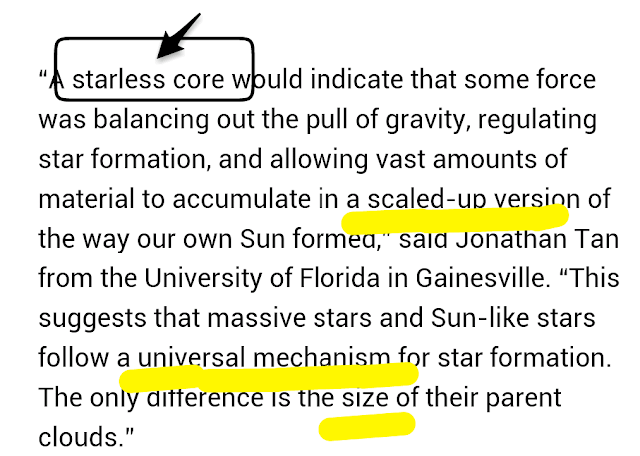Both electrons and the sun are the most perfect known spheres in the universe. Star clusters are spherical, and the most common galaxies are believed to be faint spheroidal dwarfs, which are believed comprised of spherical globular clusters. Great Voids are the best known vacuums, shaped like spheres, they are outlined by thin flat walls of superclusters. Superclusters are formed by spherical galaxy cluster bubbles interacting. The best geometric shape or symbol for depicting the vacuum of space in the universe is a 3d MHD superconducting countervortex superfluid toroidal plasmonic spheroid.
. |
| Add caption |
Why not use the same standard model used for predicting perfect electron spheres, and unite it with disciplines like plasma cosmology? Instead of seeing and reading stories from gravitational relativity scientists failing miserably using dark matter theories, cosmologists would do far better, without a "simple minded theory of everything by using gravity." The standard model has been tested and proven many times to work nearly perfectly without gravity, and plasma physicists could predict perfect sphere stars, globular clusters, spheroidal dwarf galaxies, and vast voids. Perhaps when stars supernova, they become quasi-particles that pop in and out of existance, just like they say in quantum mechanics. It would be a dramatic improvement and paradigm shift in cosmology, if quantum mechanics, nanotechs, plasma astrophysicists...all united together their sciences, supplying better interpretations, to form the new cosmology.
M.I.T. shows how fluid mechanics with water produces the fluidic analog of electrons confined to a spheroidal or "circular corral" by a ring of ions, in Quantum Mechanics.Electron Vortex Structure with Voids and superfluidity : New cosmology by Tewari Tewari.org - Electron Vortex Vacuum with Voids and Superfluid Paper
 |
| "Electric Universe Thunderbolts Forum Story on the Perfect Sphere Shaped Sun |
Electrons are perfectly round spheres, that refute supersymmetry models for dark matter theories of gravity.
The standard model does not use theoretical mysterious dark matter nor gravity, but the standard model did correctly predict spherical electrons without supersymmetry. Yet everywhere institutions and astronomy websites dictate that it's bad news, without praising and respecting the well proven standard model. All phony dark matter gravity inconsistencies that they can't work out, they blame on the standard model, not their dark matter fantasy inclusions.
The "Big Chills Great Voids" cosmology theory explains the cold spots in the CMB, and the near matching temperatures of voids with the CMB.
cooler dark black spheroidal sunspot holes, are strong magnetic field regions, that expel material outwards, much like the cosmic voids.
Fractal voids
Spherical Abel galaxy clusters discovered having connecting hydrogen bridge along a supercluster filament.
Sphere shaped galaxy clusters interact like bubbles
spherical star clusters
Spherical globular clusters formed from old spherical stars
Faint dwarf spheroidal galaxies may be the most common galaxy type and shape in the universe. Our milky way's satellite galaxies are mostly spheroidal shaped, and aligned inside a thin plane with the disk of our galaxy. Galaxy types and shapes are largely dependent upon the viewing alignment orientation with earth.
The milky way galaxy has plasma bubbles that are believed to be spherical shaped. Hannes Alfven predicted the galactic corona, and devised a fractal size scaling relationship with plasmas
 |
| Fine Ring Nebula |
 |
| Supernona 70 LY away fills the sky about the size of the full moon |
 |
| cotton candy supernova without remenant |
Galaxies have geometric 3D shaped aligned structures with vortex filaments. Most galaxies we observe are flat shaped from stellar radiation, but have higher order structure.
Vortex Sphere
 |
| positive space curvature |
Rectangular Geometric shaped galaxies
 |
| Our Popular Feature story: Rectangular shaped galaxies and our Milky Way's square spiral arms |
Atom's Electrons Orbit the Nucleus by Analogous Mathematics of the Trojan Asteroids orbiting the sun that are stablized by Jupiter's electric field.
 |
| Feature story: "Trojan Asteroids Mathematically Analog An Atom's Electrons" |
Electrons form vortices that superconduct friction free electricity in outer space by quantum tunneling.
almost spherical outer edge plasma shape
spherical superconducting samples
Positrons and Electrons are both spherical shaped vortices, that together explains the failure of the big-bang theory to find anti-matter. Opposite spinning electron and positron pairs exist together in a magnetic monopole vortex.
| Feature story: "Black Holes as Monopoles of Magnetic Charge" |
 |
| anti-matter cloud 10,000 LY across in the milky way is not produced by dark matter |





























































 A vast anti-matter cloud 10,000 light years long near the center of our milky way galaxy, is a positron fountain discovered by NASA to not be produced by dark matter annihilation. The correct interpretation is that galaxies do have huge amounts of anti-matter in fountains, but so far just in our galaxy we've found it. The missing anti-matter big-bang mystery is still being purported without facts proving huge amounts exist.
A vast anti-matter cloud 10,000 light years long near the center of our milky way galaxy, is a positron fountain discovered by NASA to not be produced by dark matter annihilation. The correct interpretation is that galaxies do have huge amounts of anti-matter in fountains, but so far just in our galaxy we've found it. The missing anti-matter big-bang mystery is still being purported without facts proving huge amounts exist.
No comments:
Post a Comment